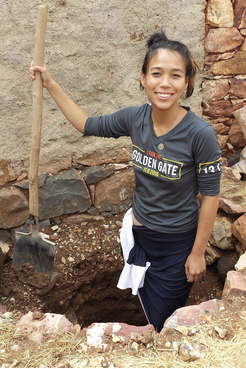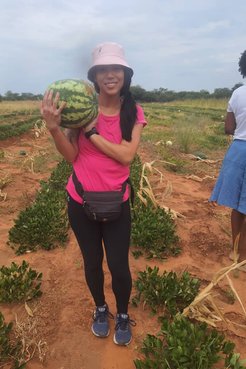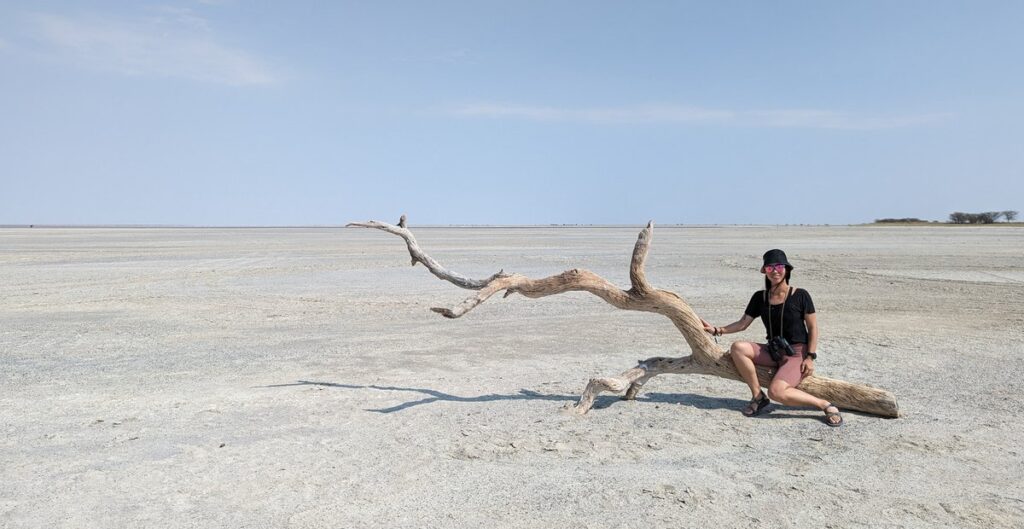Jennifer Ching Peace Corps Response Volunteer (Ethiopia & Botswana)
1) Why is AANHPI Heritage Month important to you?
AANHPI Heritage month is important because it increases the exposure and promotion of the presence of these groups of people in the social consciousness. It’s also important to me because it spotlights my people and culture, as well as our contributions in the United States, both historically and during the present day. I’m unsure if this exposure is prevalent across the U.S. or only concentrated in areas that prioritize diversity, but its existence is still important.
2) How would you encourage others to celebrate AANHPI Heritage Month?
If you [identify as] AANHPI, find one thing new you didn’t know about your culture and really dive into it. The wealth of information available to us on the internet is quite liberating. Social media has also leveled the playing field and democratized culture. I can choose who to follow and what content I want to consume, and in more recent times, have begun to be intentional about following those who amplify AANHPI voices and representation.

Jennifer Ching served as a rural community Health Volunteer in Ethiopia from 2016 to 2018.
If you are not AANPHI, use this month as an opportunity to start conversations with friends of AANHPI backgrounds about their culture and share and partake in it. Food is such an easy place to start. I’m definitely biased because I love food and eating but spending time with loved ones and sharing a meal strengthens and reinforces existing bonds while providing a nurturing environment to learn. Bubble tea has taken the nation by storm, so that’s a good place to start!
3) How did being Asian American, Native Hawaiian, or Pacific Islander influence or impact your service?
I have reevaluated my identities and reflected on what being Asian and American means to me, and where and how I fit into this world. I have experienced how [some communities around the world] view me based on my appearance.
[Some share] surprise and disbelief, personal prejudice and racism, and sometimes gradual acceptance, which, in turn, has impacted how I view myself. It’s made me become more comfortable embracing the different aspects of my identities and lean more into some facets I previously shied away from.
These experiences have renewed a sense of fierce pride in my cultural heritage. In the past, I have tried to cast off certain fragments to be more “American” – i.e., white – and assimilate.
Parts of my Peace Corps Ethiopia service were jarring and frustrating as anti-Chinese sentiment and intentional mockery and mangling of my language from strangers — usually males — were loud and abrasive, especially since I was coming from New York, a place renowned for its diversity.
Growing up, there was an element of shame or of feeling the need to reduce the expressions of my culture, especially around language. My siblings and I were born in America, then sent to live with my grandmother, aunties, and cousins in Malaysia as toddlers, until we needed to return for school. When I first returned to the U.S. and started kindergarten, I spoke no English and was placed in English as a second language classes.
As I grew older and became fluent, there was still lingering embarrassment reflected in how my parents spoke English, especially during miscommunications and mishaps in overcoming the language barrier. This wasn’t helped by how popular media portrayed Chinese people, largely with a cringe factor of Chinese-accented broken English. That landscape has changed, thankfully.
It’s been many years since my childhood and I’m still trying to learn about my culture. It’s only when I’m in a new and unfamiliar place, longing for home, that I discover it in the vestiges of my culture I carry within myself and see it reflected in other Chinese people around me.
It really hit me how Asian I am when I got to Ethiopia and started craving foods from home. They were always of the Asian variety: mother’s cooking, sushi, noodles of some variety — the list is endless. Having always been surrounded by ease of access to them, I only acknowledged my deep appreciation of them in their absence.
During my current service in Botswana as a Peace Corps Response Volunteer, which admittedly, has only been a few months, there has generally been a milder reaction, stemming from the desire to connect with me, then surprise when I correct them. Chinese and Indian immigrants have a longer history of working and living here. This exposure to diversity, along with different socioeconomic relations and impressions of these groups of people, has resulted in not only shaping Batswana conjecture of where I’m from, but also a greater willingness to pivot from their suppositions.
I’ve embraced my ability to surprise people and defy their expectations, even as their assumptions have opened the door for dialogues about my family history and American diversity.

Jennifer Ching is serving in Botswana as a district DREAMS facilitator.
At times, my ethnicity has affected who I turn to for support and comfort when I am alone and adjusting to a new environment and culture. I have come to realize that I have an affinity towards people of color, feeling more comfortable around them and able to build quicker and deeper relationships, because we remain the minority even within the Peace Corps cadre.
Other times, I am drawn to Chinese people from the mainland, excited to see a familiar face, so to speak, from my tribe.
4) What is your favorite custom or tradition from your background? Why?
Hotpot. It’s also referred to as steamboat in Malaysia, analogous to a homecoming. It’s sweltering hot, but you eat it even so, as a celebration of being together with family and welcoming everyone back home. The act of being seated around a chattering, crowded table laden with plates of ingredients vying for space, eating from a communal pot, cooking (or really boiling) your food, then fishing things out of the pot to create your own customized meal with sweat pouring profusely down your face as the fan’s [weak] attempt to cool you off fails is…. perfection.
5) What do you want others to know about your culture/being AANHPI?
It’s hard to pigeonhole Chinese people into a specific category. I’m Chinese, but in a way that feels very Malaysian and American, because that’s where and how I’ve spent the majority of my formative years relating to my culture. My parents were born and raised in Malaysia and Taiwan, where most of my extended family still live, but even they are still trying to figure out certain aspects of their history and culture.
Culture is fluid and dynamic and ever-evolving as it adapts to its people’s changing needs and situations. Chinese and Asian American cultures are rich, complex, and so diverse—across all their manifestations across different continents. Through the passage of time and oceans—and just like the vast bodies of water it has crossed to arrive to a new home—culture ebbs and flows, is diluted, then re-emerges, altered and ready for continual evolution.

No comments yet.
Add your comment